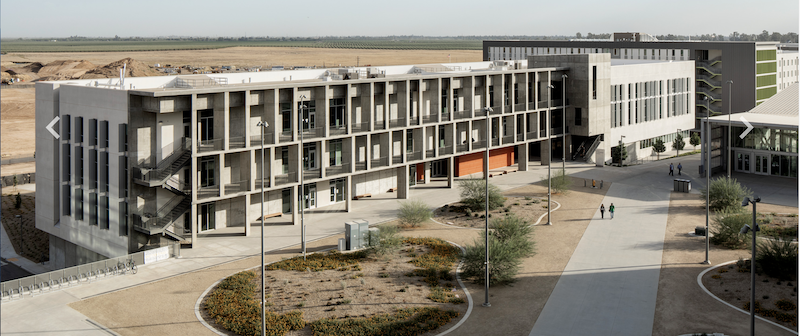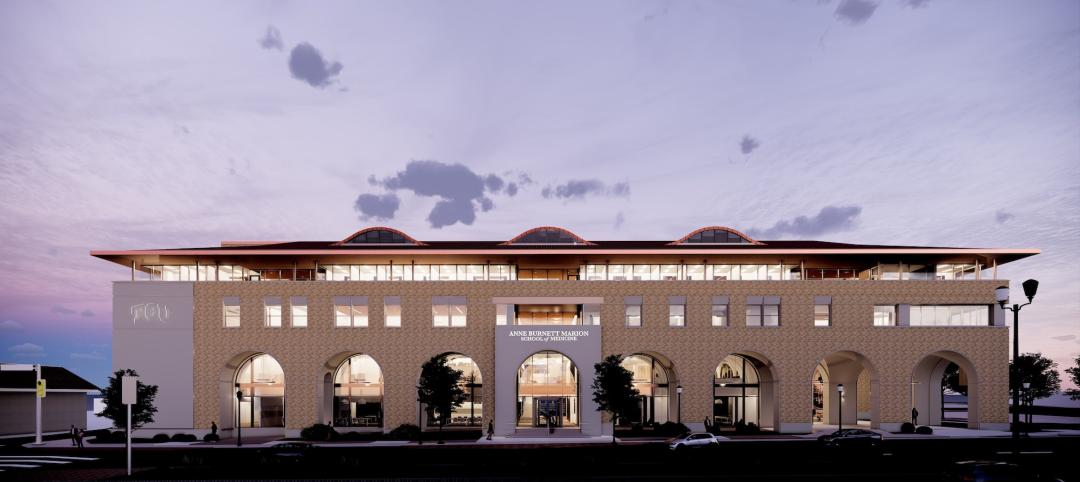Public-Private Partnerships (P3s) have become important structures for financing projects, especially for entities—like state governments and universities, at the moment—that are short on available investment capital.
But P3s change the game when it comes to allocating responsibility and reward. And some partners still enter into these arrangements without a full appreciation of their pros and cons.
WRNS Studio in San Francisco has worked on a number of P3 projects, including the $60 million 90,000-sf Arts and Computational Sciences Building at the University of California at Merced, which opened last year. With global property management consultant WT Partnership and the environmental design consultant Atelier Ten, WRNS has published a white paper that provides insights into forming P3s for Higher Ed projects to ensure smooth collaboration among the stakeholders while at the same time allowing design teams to retain a measure of control and encourage innovation.
“P3 is not business as usual; it calls for a new mindset on the part of University leaders around control over project design, delivery, financing, operations, and maintenance,” the authors state.
The white paper offers eight strategies that universities should be considering before they dive in:
1. UNDERSTAND THE RISKS
The allocation of risk among P3 parties varies and depends upon many factors, including University preference, project type, and market conditions. Typically, the University decides to retain control over select improvements or maintenance areas. Universities should think through and codify the specifics of risk transfer with the Developer partner to identify the appropriate party for handling the risk.
2. BECOME AN EXPERT, HIRE EXPERTS
Key areas of expertise that University leaders should cultivate, internally or through outside consultants, include: cultural, institutional, legal, financial, design, engineering, construction, operations and maintenance.
3. MAKE PARTNERSHIP YOUR PRIORITY
The longevity of the University/Developer relationship—which can last for decades—underscores the need for a partnership mentality that should start during the development of the P3 Business Case and extend to all entities that will inform the project’s success.
4. GAIN BUY-IN AND COMMUNICATE
The steps the white paper recommends include creating a governance board, developing a communications plan, engaging stakeholders early on to craft technical requirements, and lay the ground rules for efficient project delivery.
5. CALIBRATE THE TECHNICAL REQUIREMENTS
TRs are documents that specify comprehensive building requirements. The white paper asserts these documents need to contain the intent, goals, and priorities of the stakeholders. It also cautions about viewing TRs as merely guidelines, which can only lead to costly revisions down the road. TRs should be specific and balance performance versus prescriptive requirements. (The paper also provides tips for writing these documents.)
6. EMBRACE THE FINANCIAL CLOSE AS A CRITICAL MILESTONE
The Project Agreement and Financial Close comprise P3 projects’ binding legal framework. The agreement needs to be analyzed thoroughly, especially concerning the procurement stage. This agreement also needs to take into account the inevitability of change and to build in contingencies. The agreement should anticipate the impact of project reviews relative to budget and schedule.
7. INTEGRATE O&M AND PROJECT LAUNCH
During the course of a 30- to 40-year relationship, Operations and Maintenance (O&M) can represent up to 80% of the full term of the project. But universities’ O&M budgets can be unpredictable and lead to deferred maintenance. “The P3 model can help address this problem,” the authors state, by embedding O&M considerations into design and construction TRs, and by establishing clear lines of responsibility.
8. P3 IS A MARATHON: MANAGE THE SPRINTS AND FOXHOLES
The surest way of achieving this is by implementing accountability and transparency around financial parameters, setting success measures and deal breakers, and requiring a process for decision making.
Related Stories
University Buildings | Jan 17, 2023
Texas Christian University breaks ground on medical school for Dallas-Fort Worth region
Texas Christian University (TCU) has broken ground on the Anne Burnett Marion School of Medicine, which aims to help meet the expanding medical needs of the growing Dallas-Fort Worth region.
ProConnect Events | Jan 16, 2023
6 more BD+C ProConnect Events in 2023 – The videos show why you should participate
ProConnects bring building product manufacturers and suppliers together with architects, contractors, builders, and developers to discuss upcoming projects and learn about new products and technical solutions.
Adaptive Reuse | Jan 12, 2023
Invest in existing buildings for your university
According to Nick Sillies of GBBN, students are increasingly asking: "How sustainable is your institution?" Reusing existing buildings may help answer that.
University Buildings | Dec 22, 2022
Loyola Marymount University completes a new home for its acclaimed School of Film and Television
California’s Loyola Marymount University (LMU) has completed two new buildings for arts and media education at its Westchester campus. Designed by Skidmore, Owings & Merrill (SOM), the Howard B. Fitzpatrick Pavilion is the new home of the undergraduate School of Film and Television, which is consistently ranked among the nation’s top 10 film schools. Also designed by SOM, the open-air Drollinger Family Stage is an outdoor lecture and performance space.
Adaptive Reuse | Dec 21, 2022
University of Pittsburgh reinvents century-old Model-T building as a life sciences research facility
After opening earlier this year, The Assembly recently achieved LEED Gold certification, aligning with the school’s and community’s larger sustainability efforts.
Sponsored | Resiliency | Dec 14, 2022
Flood protection: What building owners need to know to protect their properties
This course from Walter P Moore examines numerous flood protection approaches and building owner needs before delving into the flood protection process. Determining the flood resilience of a property can provide a good understanding of risk associated costs.
Adaptive Reuse | Dec 9, 2022
What's old is new: Why you should consider adaptive reuse
While new construction allows for incredible levels of customization, there’s no denying that new buildings can have adverse impacts on the climate, budgets, schedules and even the cultural and historic fabrics of communities.
Student Housing | Dec 7, 2022
9 exemplary student housing projects in 2022
Production continued apace this year and last, as colleges and universities, for-profit developers, and their AEC teams scrambled to get college residences open before the start of classes.
Student Housing | Dec 7, 2022
Cornell University builds massive student housing complex to accommodate planned enrollment growth
In Ithaca, N.Y., Cornell University has completed its North Campus Residential Expansion (NCRE) project. Designed by ikon.5 architects, the 776,000-sf project provides 1,200 beds for first-year students and 800 beds for sophomore students. The NCRE project aimed to accommodate the university’s planned growth in student enrollment while meeting its green infrastructure standards. Cornell University plans to achieve carbon neutrality by 2035.
University Buildings | Dec 5, 2022
Florida Polytechnic University unveils its Applied Research Center, furthering its mission to provide STEM education
In Lakeland, Fla., located between Orlando and Tampa, Florida Polytechnic University unveiled its new Applied Research Center (ARC). Designed by HOK and built by Skanska, the 90,000-sf academic building houses research and teaching laboratories, student design spaces, conference rooms, and faculty offices—furthering the school’s science, technology, engineering, and mathematics (STEM) mission.















